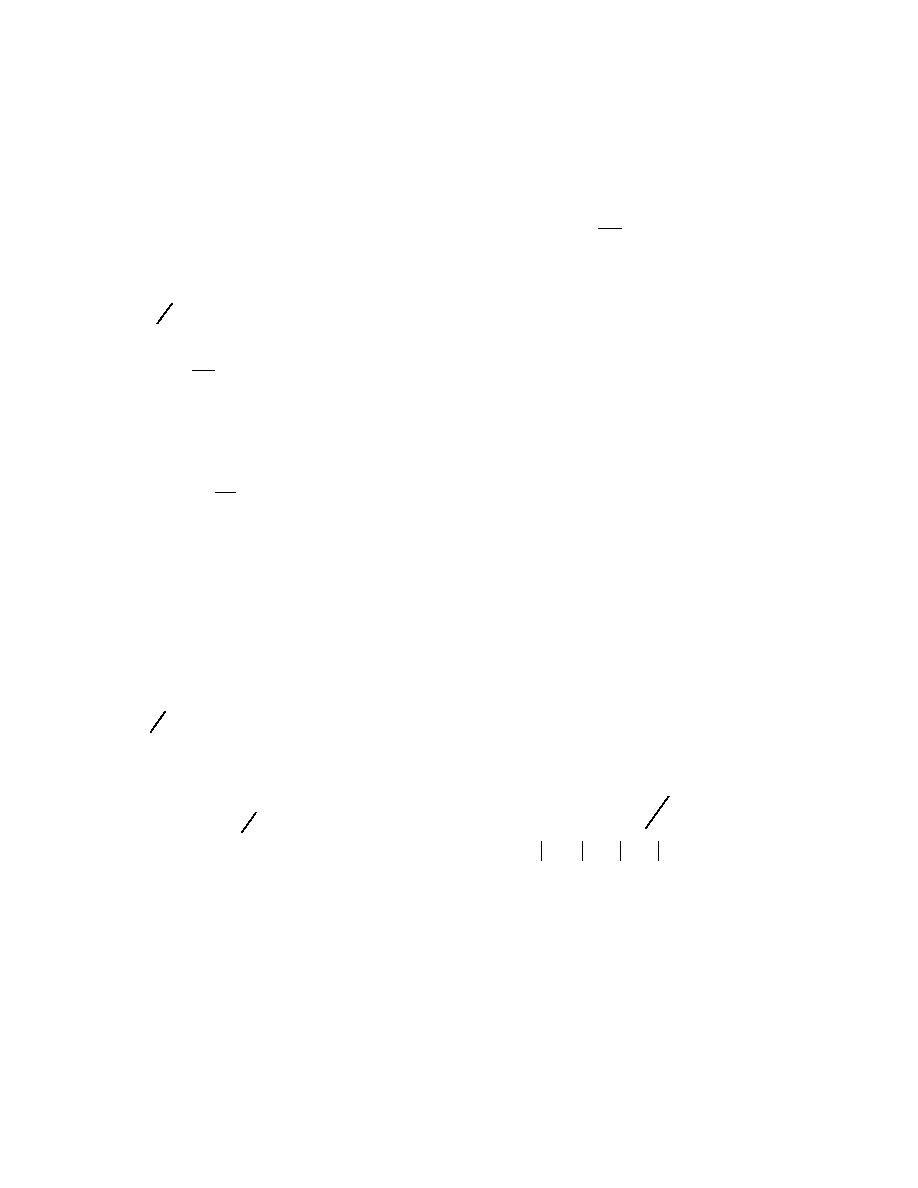
governing equation is reduced at the outset. Associat-
We approximate the target geometry using N sur-
ing the degrees of freedom with element centroids and
face elements, each being a flat triangular facet. To
locating observation points there cause all "self ele-
achieve the numerical formulation we assume further
ment" singularities to drop out of computations: in all
that the current J is approximately constant over each
self element integrations
such element, associating its value with the location of
the element's centroid, ri, i.e., Ji = J(ri) for the ith ele-
(ni ⋅ J j ) = 0 =
g
(13)
ment. Locating r only at the centroid of each element
^
.
means that what follows α is always one-half. Alto-
ni
gether we obtain
Once the currents are obtained from solution of the
above algebraic system (12) they can be substituted in
1 J ∫∫ dS′ n ⋅ J ∇g(r , r′) J
(
)
^i j
the equivalent of (7), expressed numerically in a man-
(10)
2 i
i
∑ Sj
ner similar to (12), to obtain scattered E and H fields at
any observation point. In line with the assumptions
(ri , r ′) = ni H iinc
g
outlined above, we calculate the (re)radiated fields,
^
Jj
ni
ignoring the influence of the ground surface disconti-
nuity, i.e., as if the radiating currents were in an infinite
where Sj is the area of the jth element. Thus over each
soil medium. The computer program was tested against
detailed near-field solutions for cases where analytical
element we need only evaluate the integral
solutions are available (sphere), and against reasonable-
ness checks for signal loss as a function of distance
g
, p = s, t, n
Vpij = ∫∫ dS ′
within the soil.
(11)
pi
Sj
where s and t are locally constructed tangential coordi-
nates, and n is the local outward normal coordinate.
INCIDENT FIELD AND POLARIZATION
We used four-point Gaussian quadrature to ensure
PARAMETERS
accuracy in this integration.
Locating ri at each element centroid in succession
The basic setup assumed for the antenna-target
provides N vector equations in the N unknown current
system is shown in Figure 14. The antenna is simulated
by a sheet of currents deemed to be a reasonable
face. Expressing the ultimate governing relations in
approximation of those on a metal surface driven
terms of tangential s and t components we obtain
as a dipole antenna. We adjusted this current distribu-
tion so that its subsurface radiation pattern resembles
[(
) ]
)
(
patterns considered representative of those from a di-
1 J ∑ n ⋅ s Vs + s ⋅ s Vn J
^ i ^ j ij ^i ^ j ij sj
2 si
pole antenna resting on a ground surface. To accom-
j
plish this, the antenna current distributions are expressed
[(
) ]
)
(
as
∑ ni ⋅ t j Vsij + si ⋅ t j Vnij Jtj =
^^
^^
j
( z za )
[(
J( y, z) = y cos
)
πwz ,
^
(12)
= ti ⋅ Hiinc 12 J ti ∑ ni ⋅ s j Vtij +
^
^^
(14)
j
) ]
[(
, y ya ≤ wy , z za ≤ wz
(
)
+ ti ⋅ s j Vnij Jsj ∑ ni ⋅ t j Vtij +
^^
^^
j
where wy = 0.8 m and wz = 0.4 m. In choosing unit
) ]
(
+
ti ⋅ t j Vnij J tj = si ⋅ Hiinc
^^
.
value maximum current magnitude, we implicitly nor-
^
malize all simulations with respect to that dimension
of input. In their general features, i.e., 3-dB beamwidth,
This is the algebraic system to be solved. In effect, the
lobe patterns, and angular locations where the fields
method consists of applying point matching over a PEC,
decline rapidly towards minima, patterns from these
with pulse basis functions.
distributions fit our needs here.
This formulation was chosen in part for its simplic-
Our antenna model thus consists of a rigorous rep-
ity and hence programming convenience. Because tan-
resentation of a synthetic or idealized structure. The
gential electric field components drop out, the initial
resulting fields are strictly in accordance with Maxwell's
22



 Previous Page
Previous Page
